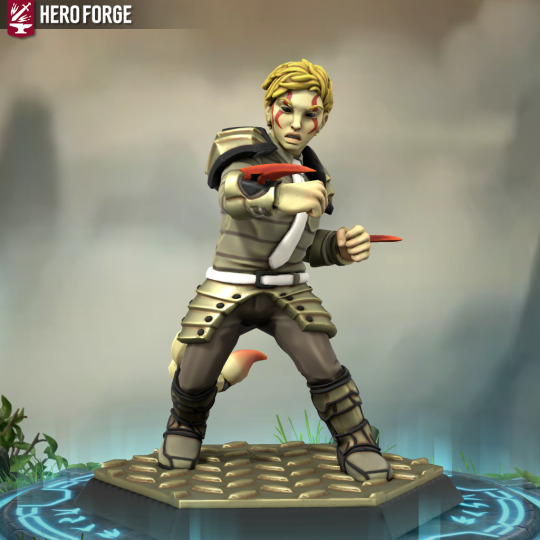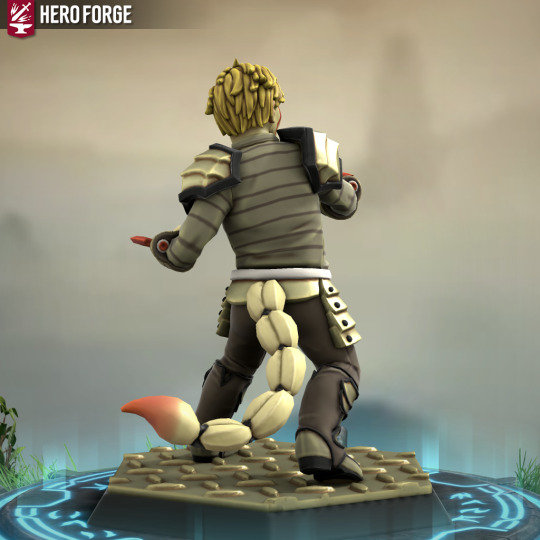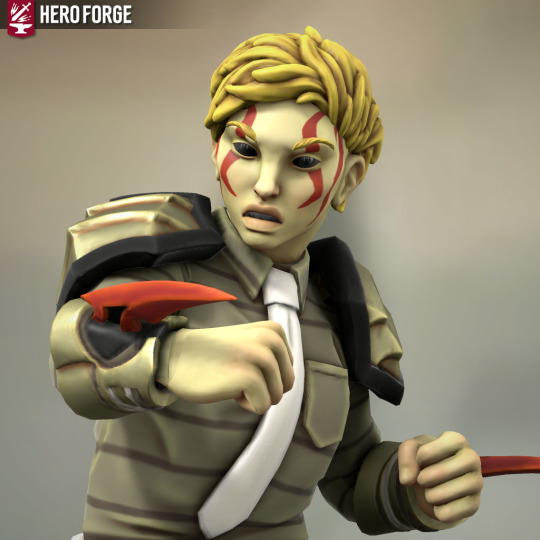#buthidae
Explore tagged Tumblr posts
Text


Bark Scorpions (Lychas scutilus), family Buthidae, see with white light (above) and with a black light (below), SIngapore
Black lights are very useful for finding scorpions at night, because they fluoresce under such light. (Often fluorescing shades of blue or green).
They should, however, not be exposed to them long term, as the exoskeleton can be damaged from prolonged exposure.
photographs by Janice Ang
2K notes
·
View notes
Text

A striped bark scorpion (Centruroides vittatus) flouresces under UV light in Texas, USA
by jciv
#god i love buthids#striped bark scorpion#scorpions#arachnids#centruroides vittatus#centruroides#buthidae#scorpiones#arachnida#arthropoda#wildlife: texas#wildlife: usa#wildlife: north america
145 notes
·
View notes
Link
0 notes
Photo




Female bark scorpion with scorplings, Lychas scutilus, Buthidae
Photographed in Singapore by Nicky Bay // Website // Facebook
Shared with permission; do not remove credit or re-post!
#animals#curators on tumblr#bugs#arachnids#scorpion#bark scorpion#scorplings#congregation#one nice bug
2K notes
·
View notes
Text

REPLITOBER 4 | PUTUTHIDAE VENTIONES
I never want to draw another bug mutos again.
But his name is an old Japanese term [ putu ] for the sound of a sword slicing, based off Futsunushi's name
I got lazy on the second half so it's Scorpiones + ventus
So Putu + Buthidae, Ventus + Scorpiones
#artists on tumblr#fan art#sketch#megaman#megaman zero#rockman#rockman zero#mm#mmz#mutos reploid#reploid#replitober#replitober 2024#scorpion#furry#robot#mecha#capcom
56 notes
·
View notes
Text
Leiurus




The deathstalker (Leiurus quinquestriatus) is a species of scorpion, a member of the family Buthidae. It is also known as the Palestine yellow scorpion, Omdurman scorpion, and Naqab desert scorpion, as well as by many other colloquial names, which generally originate from the commercial captive trade of the animal. To eliminate confusion, especially important with potentially dangerous species, the scientific name is normally used to refer to them. The name Leiurus quinquestriatus roughly translates into English as "five-striped smooth-tail". In 2014, the subspecies L. q. hebraeus was separated from it and elevated to its own species Leiurus hebraeus. Other species of the genus Leiurus are also often referred to as "deathstalkers". Leiurus quinquestriatus is yellow, and 30–77 millimetres (1.2–3.0 in) long, with an average of 58 mm (2.3 in).
(Source: Wikipedia's Deathstalker page)
New OCs based on scorpions? New OCs based on scorpions. This is Leiurus, based on the Leiurus quinquestriatus, which is one of my favorite scorpions ever. Further fun facts:
She is 5' even (because deathstalkers are smol).
She has a 9-to-5 job because my stepdad misheard me when I was talking to myself and said she should have an office job, but I'm still determining what is it that she does exactly.
Her 9-to-5 job a public facing one so she has mastered the Customer Service Voice. The rest of her time is dedicated to killing.
Whenever someone is being an asshole or creepy to her coworkers, she kills them and buries their bodies under the basement storage area.
She invented her wrist blade things herself, and yes, she does have her venom coating the blades, thank you very much.
Literally the first bit of information in her development was that she is a lesbian. I didn't even control it, she just is.
7 notes
·
View notes
Note
Really loving your blog— especially the factual and informative way you talk about the animals under your care— medically significant ones included. I just got my first hot scorpion (L. hebraeus) and I it’s been infuriating to find so little information the details of the species outside of “temperature and feeding” information. I especially enjoyed your breakdown of scorpion behavior which frankly was better formatted than any guide I’ve found before. It’s nice to see someone addressing “hot” species with respect and seriousness, but without machismo or over-exaggeration as well— since many (myself included) keep them for the joy of a particular species or for education. Keep up the great work!
Literally made my day anon thank you so much! I think the scorpion hobby suffers honestly by being overshadowed by tarantulas, which are significantly more popular. Most care guides are one off chapters in tarantula care guides, so are pretty basic. I really like Scorpions by Manny Rubio and A Guide to Keeping Australian Scorpions in Captivity by Mark Newton, but Manny Rubio lives in the UK where all buthidae are heavily controlled and Australia has no medically significant species, so with hot scorpions in particular you either get people who have been keeping them for decades and don't care (a la "Yea keep a Leiurus as your first scorpion, just don't be stupid") or people who have no experience with hot scorpions and say that they should never be kept by anyone.
I appreciate the message tho and as mentioned I'm working on a long thing rn that's going to cover basic care, first aid, and common misconceptions. Really need to like, compile all this stuff in a doc or something when I'm done.
2 notes
·
View notes
Text
Wesen Moodboards
Manticore (Middle Persian: Martyaxwar)

Their tails are capable of delivering powerful blows, and they contain a dangerous poison with high amounts of neurotoxins and nerve inhibitors that are similar to the venom of scorpions of the family Buthidae. This poison can paralyze and kill an adult human, as well as another Manticore, in mere seconds.
Manticores are similar in temperament to a Dämonfeuer or a Taureus-Armenta in that they are not afraid of death and view dying in battle as a very noble and worthy death. This, of course, means that they are excellent soldiers, willing to fight for what they believe in. This species can often be found on the front lines of battle with the likes of Steinadlers.
Notables: Jim McCabe, Colonel Adam Desai, Jonathon Wilde
10 notes
·
View notes
Text
Escorpión Amarillo - Cuidado y Alimentación del Escorpión Amarillo y Otros Arácnidos como Mascotas: Guía Completa para Su Bienestar
Cuidado y Alimentación del Escorpión Amarillo y Otros Arácnidos como Mascotas Características Físicas de la Mascota El escorpión amarillo es una criatura fascinante que puede convertirse en un compañero único y sorprendente. Para entender mejor sus necesidades, es importante conocer sus características físicas. El escorpión amarillo es un arácnido que pertenece a la familia Buthidae, y se…
0 notes
Text
Une nouvelle espèce de scorpion vient d'être décrite sur la base de spécimens adultes collectés dans le nord du Brésil. C'est l’une des plus petites espèces de scorpions de la région amazonienne.
See on Scoop.it - EntomoNews
Une nouvelle espèce de scorpion, Microtityus adriki n. sp., est décrite sur la base de spécimens adultes collectés à Cantá, dans l’État de Roraima (RR), dans le nord du Brésil. Microtityus adriki n. sp. est la deuxième espèce de Microtityus Kjellesvig-Waering, 1966 connue au Brésil et constitue l’une des plus petites espèces de scorpions (12,39 à 19,47 mm) de la région amazonienne.
Sur l’un des plus petits scorpions amazoniens : une nouvelle espèce de Microtityus Kjellesvig-Waering, 1966 (Scorpiones, Buthidae) du Brésil, avec une diagnose amendée et une analyse de la distribution potentielle du genre
Jairo A. MORENO-GONZÁLEZ, Rogério BERTANI & Leonardo S. CARVALHO
Zoosystema 46 (10) - Pages 245-268 Publié le 25 avril 2024
"Dans cette étude, nous proposons une diagnose générique amendée et une diagnose spécifique, décrivons l’hémi-spermatophore mâle de Microtityus, proposons la séquence de code-barres COI et une analyse de la distribution potentielle pour le genre.
La morphologie de l’hémi-spermatophore mâle de Microtityus diffère de celle d’autres genres de buthidés néotropicaux, sauf pour le nombre de lobes (trois lobes), état de caractère partagé avec plusieurs genres."
(...)
0 notes
Note
Can we see some scorpions of your choosing?
How about some arizona bark scorpions, one under normal light... and one fluorescing under black light.

Arizona Bark Scorpion (Centruroides sculpturatus), family Buthidae, Phoenix, AZ, USA
photograph by Andrew Meeds

Arizona Bark Scorpion (Centruroides sculpturatus), family Buthidae, Organ Pipe Cactus National Monument, AZ, USA
Black lights are very useful for finding scorpions at night, because they fluoresce under such light. (Often fluorescing shades of blue or green).
They should, however, not be exposed to them long term, as the exoskeleton can be damaged from prolonged exposure.
photograph by Andrew Meeds
246 notes
·
View notes
Text

A striped bark scorpion (Centruroides vittatus) in Dolan Falls Preserve, Texas, USA
by Alan Cressler
#striped bark scorpion#scorpions#arachnids#centruoides vittatus#centruoides#buthidae#scorpiones#arachnida#arthropoda#wildlife: texas#wildlife: usa#wildlife: north america
52 notes
·
View notes
Text
A new species and a key to the genus Leiurus Ehrenberg, 1828 (Scorpiones, Buthidae) from Saudi Arabia
http://dlvr.it/SwpMgc
0 notes
Photo

Bark scorpion (Centruroides bicolor) on the Osa Peninsula in Costa Rica
Chien C. Lee
392 notes
·
View notes
Text

Black fat-tailed scorpion (Androctonus bicolor)
Photo by Arie van der Meijden
#black fat tailed scorpion#fat tailed scorpion#androctonus bicolor#androctonus#buthidae#buthoidea#neoscorpionina#scorpiones#arachnida#euchelicerata#chelicerata#arthropoda#panarthropoda#ecdysozoa
72 notes
·
View notes
Text

Centruroides vittatus
Striped bark scorpion
Escorpión rayado de la corteza
6 of August 2022 — Jalisco, MX
Striped bark scorpion stings are painful but rarely deadly (as is in the case of an allergy, for example). However, the stings of other members of their genus can be very dangerous, so be careful out there :)
What a whimsical little friend <3 I love scorpions so much, they’re so cute.
#bugs#bugs i found#Arachnida#Scorpiones#Buthidae#Centruroides#Centruroides vittatus#I finally went and found scorpions yay#Unfortunately the other pictures are blurry#so you’ll have to believe me when I say I found more than one haha#the other one was a small fella#original content
8 notes
·
View notes